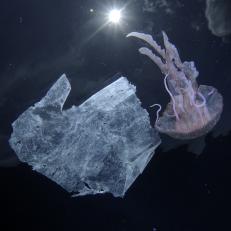What is a Whale Really Worth?
Oceana discovers the environmental and economic benefits of whales.
Oceana, the largest international advocacy organization dedicated solely to ocean conservation, presents solutions to our ocean’s most pressing issues. Together, we can restore our ocean’s health and abundance.
You can stream OCEANA PRESENTS on discovery+.
April 19, 2021
By:
Oceana
Shop This Look
The tail of a southern right whale appears on the surface of waters in Puerto Pirámide, Península Valdés, Patagonia, Argentina. Spotting a whale tail, first-hand, is one of several key reasons why economists put a significant ecotourism value on whales.























.jpg.rend.hgtvcom.231.231.suffix/1629480570425.jpeg)



